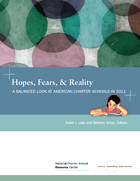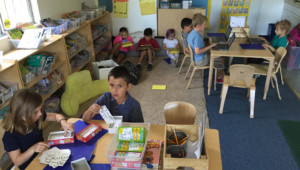Strategic Collaboration Yields Great Options for All Students

The Center On Reinventing Public Education (CRPE) published the report “Hopes, Fears, & Reality: A Balanced Look at American Charter Schools in 2011” this January. CRPE asked Tom Vander Ark and other experts to weigh in on their thoughts on the future of district and charter collaboration.
District/Charter Collaboration: The promise, the peril
 In twenty or more major cities, charter schools and districts are laying down arms and coming to the table to figure out how to share resources and responsibility to serve all students equitably. The Bill & Melinda Gates Foundation has a multi-year initiative to support the design and implementation of district-charter collaboration compacts. CRPE is helping these and other cities figure out how to reinvent their central office structures so that charter schools can become a normal part of a district’s efforts to better meet student needs. But some of these efforts go much deeper than others and the impact on student learning remains to be seen.
In twenty or more major cities, charter schools and districts are laying down arms and coming to the table to figure out how to share resources and responsibility to serve all students equitably. The Bill & Melinda Gates Foundation has a multi-year initiative to support the design and implementation of district-charter collaboration compacts. CRPE is helping these and other cities figure out how to reinvent their central office structures so that charter schools can become a normal part of a district’s efforts to better meet student needs. But some of these efforts go much deeper than others and the impact on student learning remains to be seen.
Is it a good thing or a bad thing that the charter-district lines are blurring in these ways? Will charter-district collaborations amount to something that helps students? Or are they just a passing fad to attract the funding and favor of big foundations? Are charters in danger of being co-opted by district interests? Are districts putting themselves in political peril? What will it take to make these partnerships work?
Strategic collaboration yields great options for all students by Tom Vander Ark
School district and charter collaboration is obviously a good idea. When collaboration leads to strategic coordination, it has the potential to create a single portfolio of quality educational options. Jim Shelton and I wrote about this in a 2004 paper—Good Urban Schools: A Portfolio Approach—that still holds up pretty well.
There are four primary areas of tactical collaboration: facilities, communication and enrollment management, transportation, and special education and other support services. Unfortunately, in most cities there is little coordination in any of these areas. New York City is probably the best example of tactical collaboration and it (and strong accountability and a subway) result in good options for every family.
There are three areas of potential strategic collaboration:
1. Authorizing. Districts (and states) should use authorizing and contracting strategies as the basis for service delivery and accountability. In other words, every school and service provider should operate under a performance contract—no tenure for schools (see Performance Contracting: Model for Governance, Provisioning & Accountability).
2. Options. Community boards shouldn’t operate schools, they should ask, “What kinds of schools do our kids need?” And “How do we best leverage our community assets and meet specific challenges?” The authorizing process should create a system of managed choice that is intentional about what kinds of schools go where.
For example, to the extent possible, every secondary student should have access to a college prep school, an accelerated pathway (e.g., Early College), a supportive individualized school, and relevant tech-prep pathways.
3. Online. Choice to the course with portable funding is a whole new way to think about options. It should make it easier to get a good education close to home when secondary students can mix and match. Every student in American should have access to every AP course, to dual enrollment options, to lots of foreign languages. Students should be able to take more than what is currently considered a full load (they’ll graduate early, it won’t cost much more).
Creative blends (what Innosight would call Flex) that leverage local resources and employers are the new frontier for district and charter collaboration.
Read “What Is the Future of District/Charter Collaboration?” at CRPE for all of the expert opinions.





0 Comments
Leave a Comment
Your email address will not be published. All fields are required.